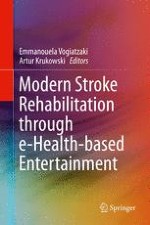2016 | OriginalPaper | Buchkapitel
5. Motivating Rehabilitation Through Competitive Gaming
verfasst von : Cecilia Sik Lanyi, Veronika Szucs
Erschienen in: Modern Stroke Rehabilitation through e-Health-based Entertainment
Aktivieren Sie unsere intelligente Suche, um passende Fachinhalte oder Patente zu finden.
Wählen Sie Textabschnitte aus um mit Künstlicher Intelligenz passenden Patente zu finden. powered by
Markieren Sie Textabschnitte, um KI-gestützt weitere passende Inhalte zu finden. powered by
